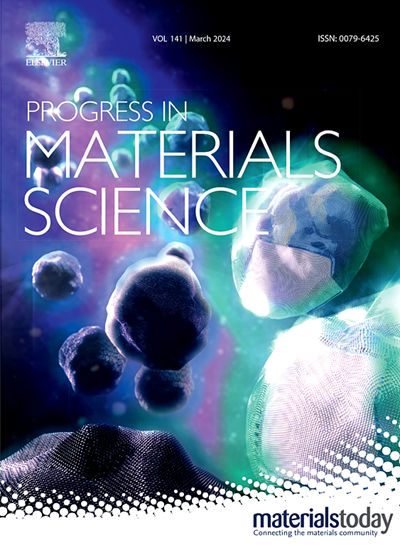Extreme wetting metallic devices: Structures, fabrication, applications and prospects
IF 40
1区 材料科学
Q1 MATERIALS SCIENCE, MULTIDISCIPLINARY
引用次数: 0
Abstract
Extreme wetting metallic devices hold promising prospects in numerous fields, including aerospace, marine engineering and civil equipment, owing to their distinctive surface properties. The structures and fabrication of these surfaces have significant impacts on their functionality and applications. Herein, an overview of extreme wetting metallic devices are presented, focusing on their structures, fabrication, applications and prospects. Initially, the definitions and theoretical foundations of superhydrophilic and superhydrophobic surfaces, along with recent research advancements are discussed. Next, the additive and subtractive manufacturing employed for the precise construction of these surfaces is analyzed, with an emphasis on evaluating the performance of various metallic materials. Then, surface modification techniques are reviewed, highlighting their mechanisms, benefits and limitations. Additionally, potential application scenarios for extreme wetting metallic devices are summarized, including their roles in corrosion protection, anti-icing, self-cleaning functionalities and so on. Finally, the trend of extreme wetting metallic devices and the perspectives for this exciting new field are highlighted.
极端润湿金属装置:结构、制造、应用和前景
极端润湿金属器件由于其独特的表面特性,在航空航天、海洋工程和民用设备等众多领域具有广阔的应用前景。这些表面的结构和制造对其功能和应用有重大影响。本文综述了极端润湿金属器件的结构、制造、应用和前景。首先讨论了超亲水表面和超疏水表面的定义、理论基础以及近年来的研究进展。接下来,分析了用于精确构建这些表面的增材制造和减法制造,重点是评估各种金属材料的性能。然后,对表面改性技术进行了综述,重点介绍了其机理、优点和局限性。此外,总结了极湿金属器件的潜在应用前景,包括其在防腐蚀、防冰、自清洁等方面的作用。最后,对极端润湿金属器件的发展趋势和发展前景进行了展望。
本文章由计算机程序翻译,如有差异,请以英文原文为准。
求助全文
约1分钟内获得全文
求助全文
来源期刊

Progress in Materials Science
工程技术-材料科学:综合
CiteScore
59.60
自引率
0.80%
发文量
101
审稿时长
11.4 months
期刊介绍:
Progress in Materials Science is a journal that publishes authoritative and critical reviews of recent advances in the science of materials. The focus of the journal is on the fundamental aspects of materials science, particularly those concerning microstructure and nanostructure and their relationship to properties. Emphasis is also placed on the thermodynamics, kinetics, mechanisms, and modeling of processes within materials, as well as the understanding of material properties in engineering and other applications.
The journal welcomes reviews from authors who are active leaders in the field of materials science and have a strong scientific track record. Materials of interest include metallic, ceramic, polymeric, biological, medical, and composite materials in all forms.
Manuscripts submitted to Progress in Materials Science are generally longer than those found in other research journals. While the focus is on invited reviews, interested authors may submit a proposal for consideration. Non-invited manuscripts are required to be preceded by the submission of a proposal. Authors publishing in Progress in Materials Science have the option to publish their research via subscription or open access. Open access publication requires the author or research funder to meet a publication fee (APC).
Abstracting and indexing services for Progress in Materials Science include Current Contents, Science Citation Index Expanded, Materials Science Citation Index, Chemical Abstracts, Engineering Index, INSPEC, and Scopus.
 求助内容:
求助内容: 应助结果提醒方式:
应助结果提醒方式:


